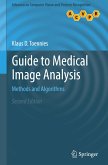In general, image processing texts are intended for students of engineering and computer science, and there is little written at all on the specific requirements of medical image processing. Students of medical radiation science (Diagnostic radiography, Nuclear medicine, Radiation therapy) usually have minimal mathematical and computer science training and find the available texts incomprehensible. A text that explains the principles of image processing in minimally-mathematical language is needed for these students. Contrary to the claims of some textbook authors, the vast majority of technologists that process images do not need to understand the mathematics involved, but would nevertheless benefit from a thorough understanding of the general process.
"The purpose of this book is to help professionals without a very solid mathematical background to understand how medical images are formed, processed, and displayed. It explains all the processes without advanced mathematics and the reader gets an intuitive feel for all processes from signal production to its final display. This is harmonically enhanced through a wealth of illustrated examples.
This is a very well written book, easy to read, and easy to follow. All of the material is backed up with up-todate useful literature for further reading. The reader is guided through an intuitive way to digital imaging in medicine without the need for advanced mathematics knowledge. This "tour" is advanced by numerous illustrated examples, which help the reader to advance his/her knowledge."
(George C. Kagadis, PhD, in Med. Phys 37 (7))
This is a very well written book, easy to read, and easy to follow. All of the material is backed up with up-todate useful literature for further reading. The reader is guided through an intuitive way to digital imaging in medicine without the need for advanced mathematics knowledge. This "tour" is advanced by numerous illustrated examples, which help the reader to advance his/her knowledge."
(George C. Kagadis, PhD, in Med. Phys 37 (7))








